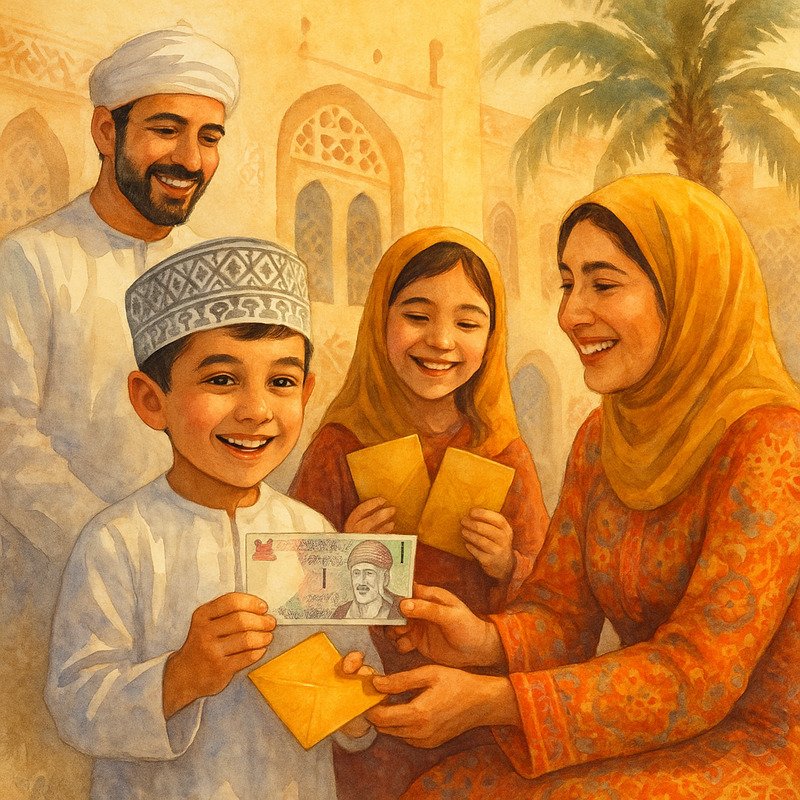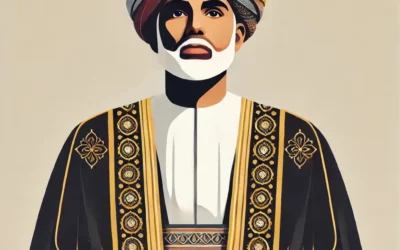Eidiya: A Simple Gift with a Deep Meaning
By Omanspire Editorial | Published on June 7, 2025
Known in Arabic as العيدية, Eidiya is a custom deeply rooted in many Muslim societies, including Oman. It refers to the money or small gifts given during Eid, often from older family members to the younger ones. Though it may seem like a small gesture, Eidiya carries with it a rich cultural and emotional significance.
More Than Just Money
For children, Eidiya brings joy, surprise, and sometimes even a sense of independence. The colorful envelopes, the playful teasing before handing it over, and the sparkle in young eyes make it one of the most memorable parts of Eid.
But Eidiya isn’t limited to children. In some families, elders are also gifted as a sign of respect, and those in need may receive support from neighbors and relatives during Eid. This simple act becomes a tool of inclusion and compassion.
A Circle of Giving
Eid is not just about celebration—it’s a season of giving. Alongside Ud’hiya and charity, Eidiya plays a role in redistributing wealth, reinforcing social ties, and reminding us of the values of generosity and kindness. It bridges generations, builds memories, and reflects a spirit of community that defines Eid.
A Boost to the Economy
While its cultural meaning stands tall, Eidiya also has a quiet economic impact. The practice of giving money or purchasing gifts stimulates small businesses, toy shops, and clothing stores. Banks often see increased withdrawals before Eid, and markets buzz with movement. In this way, Eid creates a mini economic ecosystem—starting from shopping for Eid clothes to handing over Eidiya in its decorated envelope.
In Oman’s Way
In Oman, Eidiya is often given with elegance and simplicity. Families may gather in traditional dress, enjoying Eid breakfast, exchanging visits, and passing Eidiya with warm words. The tradition blends modern customs with age-old Omani values of respect, community, and love.
Eidiya is a Memory
At its heart, Eidiya is about creating moments that last. The memory of receiving it, the anticipation, and the joy—these are woven into the fabric of our childhood and culture.
As we continue this beloved tradition, may we remember that behind the envelope is a message: you are loved, remembered, and cherished.
I'm Hassan — a multidisciplinary storyteller at the intersection of culture, creativity, and strategy. As a content creator and website manager at Omanspire, I bring Omani stories to life through thoughtful writing, SEO-driven publishing, and engaging digital experiences. With a passion for history, branding, and visual design, I craft content that bridges tradition and innovation — always with purpose, and always with people in mind.




